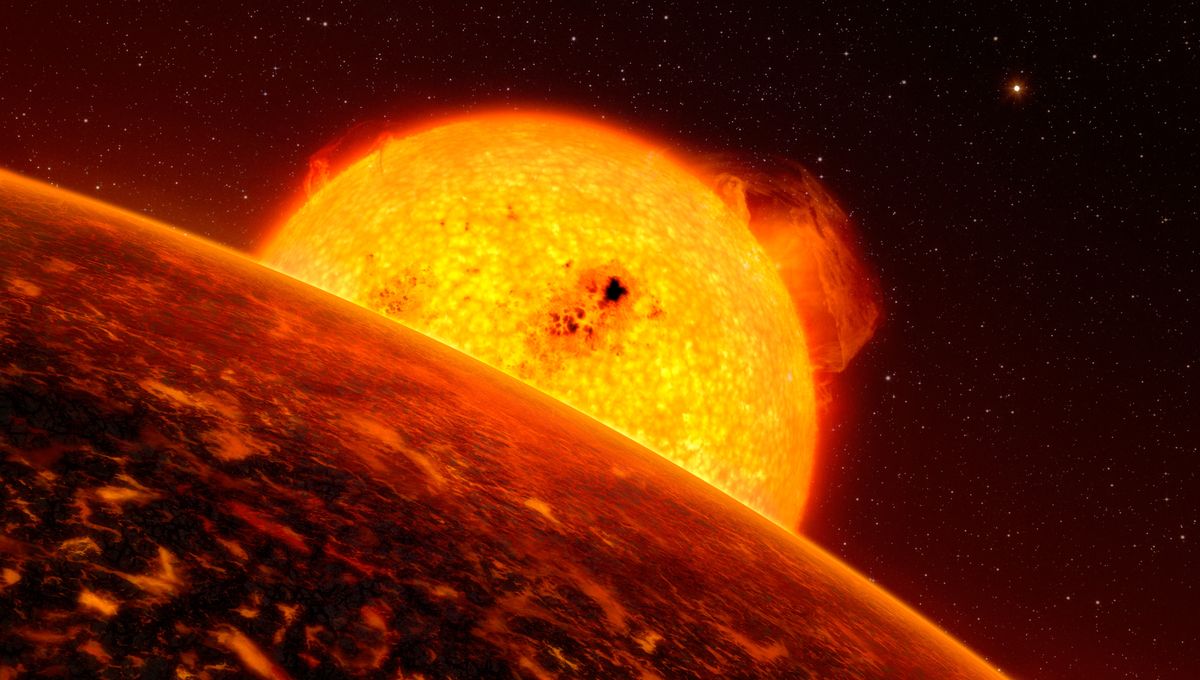
Astronomers have found a new, speedy planet: TOI-1347 b orbits its star in just 20 hours and 24 minutes. Its existence has only been recently confirmed, and it looks like a truly intriguing world. It’s not just its extremely close orbit that is peculiar – it’s the biggest in its class, and it might have a weird atmosphere to boot.
The planet was discovered by TESS, NASA’s Transiting Exoplanet Survey Satellite. It is in an older system estimated to be at least one billion years old, but maybe up to 1.8 billion years. This fact is extremely relevant when it comes to what the planet looks like now.
TOI-1347 b and its fellow planet TOI-1347 c orbit a star that is a bit lighter and a bit smaller than our Sun – but they orbit it much closer than any planet in our solar system orbits the Sun. Many planets that orbit their star in this way are known as hot Jupiters, gassy inflated worlds that hold on to their atmosphere due to their mass.
What we are witnessing here is an ultra-short period (USP) planet. About one in 200 Sun-like stars has one of these, and they are very different from hot Jupiter. They tend to be dense and rocky, and if they do have an atmosphere, it is the primordial material of the star system. A star tends to blow that away in one hundred million years.
Not many have a radius bigger than twice that of Earth. TOI-1347 b has a radius of 1.8 Earths, but it has a mass over 11 times that of our planet. It is the most massive USP with a radius below 2 Earth’s radii. The fellow planet is also quite big, but a lot lighter, although the follow-up observations were not conclusive enough to provide a correct estimate.
What’s most intriguing about this world, though, is the series of observations that suggest that it is covered in an atmosphere dense and interesting enough to block visible light. The team doesn’t believe that it is made from primordial hydrogen and helium like a gas giant. That should have dissipated by now. They suggest instead that the atmosphere must have a “high mean molecular weight”.
This means that the planet might have clouds made of hot sand, or it might have a molten surface – similar to radio-emitting planet 55 Cancri e – that spews elements such as sodium in the atmosphere. Either option makes this world perfect for follow-up observations with JWST.
A paper announcing the discovery was accepted for publication in The Astronomical Journal and it is available on the ArXiv.
Source Link: Newly Discovered Speedy Planet Orbits Its Star In Less Than An Earth Day